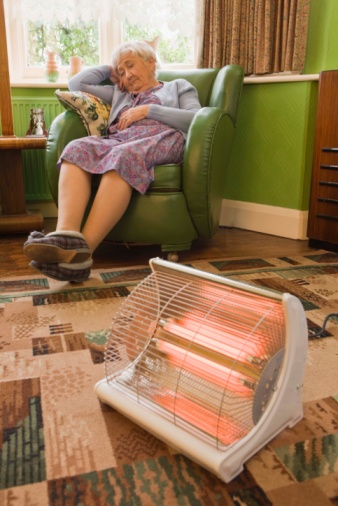
RELATED READING: Why You’re More Likely To Die This Winter
Seeking Warmth And Facing Toxic Chemicals
Indoor heating devices such as coal-burning stoves, wood fireplaces and space heaters seem like saviors when temperatures plummet in the winter months. As people increase the use of these, as well as the use of other gas and oil burning appliances, they have to keep safety in mind. All of these devices have the potential to poison you and your loved ones.
If a coal-burning stove doesn’t have proper ventilation for instance, you can be exposed to toxic chemicals referred to as carbon monoxide. When you have a blocked chimney and use your fireplace a lot, you could be producing toxic chemicals.
Carbon monoxide (CO) is colorless and odorless, so in many cases people are not even aware that there is a problem and then it is too late. If you don’t have a battery-powered or battery back-up CO alarm, now is a good time to buy one. Every year in the United States, more than 400 people die from accidental exposure to carbon monoxide, the Centers for Disease Control and Prevention (CDC) says.
This December, the city of Toronto was hit with a crippling ice storm leaving 300,000 people without hydro with temperatures plummeting. A family of four died from carbon monoxide poisoning while burning coal to keep warm during the ice storm. In another incident, a man and woman died after carbon monoxide fumes from their gas-powered generator located in the garage seeped into their home. Surviving family members reported that the generator was being used to keep everyone warm because of the cold during the power outage.
Symptoms Of Carbon Monoxide Exposure
People often mistake carbon monoxide poisoning for the flu. Symptoms can be similar with the exception that flu is likely to include a fever. Headache, dizziness, fatigue and even shortness of breath are early signs of exposure to carbon monoxide. Higher levels of exposure can lead to nausea and vomiting, disorientation and loss of consciousness.
If you think you have been exposed to toxic chemicals from CO, it is important that you get fresh air right away. You should turn off any combustion appliances, go outside and then seek medical attention.
RELATED READING: Why your Arthritis Gets Worse After Christmas
Stay Warm And Safe
Prevention is the key to protecting yourself from carbon monoxide poisoning, says the CDC and the U.S. Environmental Protection Agency. Here are some key preventon recommendations:
*Make sure you have a working CO detector in your home
*Have your fuel-burning appliances inspected by a trained professional at the beginning of each heating season
*Choose appliances that vent fumes to the outside
*Read and follow all instructions that accompany fuel-burning devices
*Never use a gas range, oven or dryer for heating
*Never operate unvented gas-burning appliances in a closed room where you are sleeping
*Don’t leave a car running in the garage even with the door open
*Don’t use a charcoal grill indoors
*Never ignore symptoms, especially if more than one person is experiencing them
Keeping warm is more challenging in the extreme cold, especially when you just want the quickest, easiest fix. But the dangers of toxic exposure are very real, and being diligent about safety is a lifesaver.